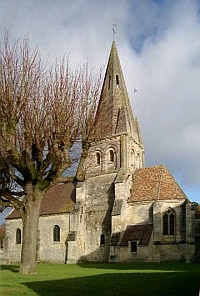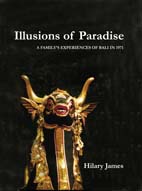
Reviews by Paul Crossley and Philippe Plagnieux below |
The Creation of Gothic Architecture - an illustrated thesaurus: The Ark of God |
|
* Vols 1+2 ..... "Foliate capitals 1170 to 1250" * Vol 3 ........... "Archaic capitals prior to 1130" * Vols 4+5 ..... "Formal capitals 1130-1170" |
||
Author: |
John James, PhD |
|
Publisher: |
West Grinstead Publications, London, Boston and Hartley Vale, 2002 |
|
ISBN: |
Vols 1+2: 0959600582 Vol 3: 0959600590 Vols 4+5: 9780975742525 |
|
Format: |
Buckram bound, 300mm x 225mm Vols 4+5 ... 1778 pps, 8,200± ills |
|
Price: |
Vols 1+2 ...... Aud$1360.00 (+ P&H) For Currency Conversions Click Here
(Due to the size and weight of this volume you should contact us with your location details so we may advise you on shipping costs ) |
|
<<<<< SPECIAL OFFER FOR INDIVIDUALS ONLY - $1,800 >>>>>>
(sorry, but not for institutions or libraries)
For $AUD 1,800 you may buy all 5 volumes directly from the author. The purpose is to help scholars and others have copies of this Thesaurus in their personal libraries for reference and pleasure.
<<<<< SPECIAL OFFER FOR INDIVIDUALS ONLY - $1,800 >>>>>>FROM THE AUTHOR:
THE ARK OF GOD is a comprehensive pictorial history of Early Gothic churches in the limestone region of northern France known as the Paris Basin. THE ARK is presented as a nine-volume series that covers the crucial 200 years between 1050 and 1250 when Romanesque architecture was transformed into Gothic.
The Paris Basin contains 1,420 churches with work from these years. Most have never been published. The photographs will illustrate over half of these which significantly contributed to the creation of the new architecture.
The underlying purpose of the series is four-fold:
1) Provide a photographic description of all the more significant churches during this 200 years.
2) Analyze the stylistic changes to the carved capitals and the evolution of vault erection techniques.
3) Establish a solid and all-inclusive foundation for dating the construction phases of these churches.
4) Use this chronology to identify the time and place for each of the creative ideas, inventions and innovations that produced the Gothic style, to follow their evolution from place to place and to identify some of the major creators.
The complete set of work will be contained in 9 volumes
(Volumes 1+2, Volume 3 and Volumes 4+5) are now published
Review from Paul Crossley, Burlington Magazine April 2004
This epic enterprise, of which the first two volumes are reviewed here, is modestly described by its author as ‘an illustrated thesaurus’. In reality these two massive volumes are opening salvoes in what will be the most comprehensive history ever written of Early and High Gothic churches in the limestone regions of northern France.
Surveys on French Gothic architecture are legion, and another account of the birth and maturity of French architecture from the middle of the twelfth century to the 1230’s might seem superfluous, but John James’s study is, and will be, no ordinary survey, any more than its author is any ordinary architectural historian.
For over thirty years James has conducted a single-minded, and largely a single-handed campaign to rewrite the history of Early Gothic in France, in a manner quite unlike any other comparable scholar in the field.
James is an intense particularist and an ambitious generalist. His first book, a monumental study of High Gothic Chartres cathedral, The Contractors of Chartres, established the most detailed chronology of Chartres based on a minute examination of its fabric – its stonework coursing, capitals, geometrical schema.
His second work, The Template-makers of the Paris Basin (West Grinstead 1898), used the same exacting techniques to trace the migration of forms across the leading buildings of the Ile-de-France, and to set up a wider set of chronologies.
James’s present project is a vast extension of these methods, aimed at nothing less than recreating the story of Gothic architecture detail by detail, almost stone by stone, in every surviving Gothic church in the Ile-de-France from c.1140 to c.1230.
It promises us nine large volumes, discussing the general characteristics, and the smallest details, of about 1,420 churches, and containing, in all, the remarkable sum of 9,800 photographs, which constitute the visual database for the whole study.
The first two volumes, reviewed here, aim to establish an accurate chronological framework for this task, by illustrating thousands of capitals, dating them, largely on the basis of comparative style, to a decade, and them arranging them, and the buildings to which they are attached, in a decade-by-decade chronology.
The sparse documentary evidence for the dating of the churches has been assembled, sourced and translated by Chris Henige.
The seven projected volumes will extend the study to the evolution of rib vaults in Europe and to other ‘inventions’ that created Gothic, ending with a two-volume corpus of Gothic churches.
James’s single-minded analysis of the minute, pursued with forensic intensity, has left him, as he admits, ‘outside the academic pale’. His approach is ‘artisan’ rather than intellectual. Masons and architects are centre stage, though his names for them – ‘contractors’ and ‘template-makers’ – betray his craft theory of creativity.
For James the secrets of Gothic lie not in the habits of mind of the theologian, or the workings of the liturgy, or even the physical demands of structure, but in the quirks and inconsistencies of the mason’s craft, revealed in the minute – some would say myopic – examination of the hidden corners of hundreds of individual buildings. Like all connoisseurship, this Morellian analysis has no respect for the hierarchies of ‘great art’.
Gothic creativity is not, for James, a ‘trickle-down’ process, from the great church to parish churches and chapels. On the contrary, the small church often reveals more that the much-studied cathedral.
In the last resort, James’s marginal position in the academy could be ascribed to his rare kind of intelligence: his is a nominalist fascinated by universals. God, indeed, dwells in the detail, but the detail finds its place in a vast edifice, designed to reconstruct nothing less than the early history of a whole stylistic epoch.
Not everyone has agreed with James in the past, nor will they necessarily subscribe to the conclusions, or even the premises, of this new magnum opus. Isn’t this dating a little too deterministic? Do masons change their capital carving style every decade? In certain buildings (e.g. Reims) is it not true the capitals are left carved in the workshop before, sometimes long before, installation? Is it really possible, often only on the basis of style alone, to date parts of a building within plus or minus ten years?
Doubts of this kind cannot, however, obscure the enormous contribution which James’s method has already made to re-shaping our view of the history of French Gothic, and I doubt if they will seriously damage the value of this new project.
Thanks to him, we have the most accurate relative chronology of High Gothic Chartres; we can redate the choir of Laon to its proper period, almost thirty years earlier than was generally supposed; and – most importantly – we can now locate the beginnings of the High Gothic elevation not in Chartres but in late Twelfth-century Soissons cathedral.
James’s work promises to be the most searching and authoritative exposition of the fabric of French Gothic since Viollet-le-Due.
No one knows the hidden qualities of these churches more intimately – more from the inside – but James, except perhaps the masons who built them.
This projected study is a monumental corpus which deserves to be treated with the greatest seriousness. Its thousand of new (and on the whole high quality) photographs of details, never before recorded and published, constitute an invaluable resource for any student of Gothic.
Despite its price, no serious art-historical library should be without it. West Grinstead Publications is to be congratulated for taking on this epic venture. We eagerly await the next seven volumes.
Review from Philippe Plagnieux, Bulletin Monumental December 2006
Translated by Monique MannersArchitect and gothic architecture specialist on the north of France, essentially for the period between the middle of the 12th century and the beginning of the 13th, John James is mainly recognised for his study of Chartres cathedral for which he proposed a very original linking of the building campaigns: by horizontal sections. During his frequent visits to our country, this architectural historian, coming from Australia, has become an untiring visitor and photographer.
Far from keeping for himself the immense and precious knowledge thus acquired, he conveys parts of it in the shape of two magnificent volumes being a corpus of gothic capitals of the Paris basin in which he attempts to follow their evolution between the 1170s and 1240s.
The author, in a way, rebounds from the works of Denise Jalabert but with a completely different intention since he considers a much tighter period while multiplying - in a very impressive manner - the examples (close to 550 buildings) and illustrations (9,800 illustrations, all of which are of excellent quality and format).
The story of gothic architectural sculpture thus passes from being primarily a synthesis into becoming a rational corpus.
The avowed ambition of the author is to establish a chronology for the capitals founded on the morphological evolution of their vegetal ornamental forms. This is a difficult but necessary undertaking, worthy of praise, even though his criteria sometimes lack the rigour of specialists in antique ornament who, it is fair to say, have the advantage of sharing a common vocabulary.
After establishing a list of monuments or building phases dated more or less precisely from the texts, John James attempts to define the characteristics of each decade between 1170/80 and 1240/50. This enables him, as a result, to propose dates for non documented churches and their campaigns of construction.
According to the author, the 1170s, which constitute his starting point, correspond to the passage from a purely formal conception to a more naturalist interpretation of the vegetal forms, which around 1200, gave birth to a fully realist flora. Although this works more or less successfully in broad terms, it is not possible to adhere to a purely progressive outline.
Be that as it may, one can only approve of John James when he makes the principal chronological indicator for the 1170s the Canterbury capitals since, thanks to the chronicle of the monk Gervase, the erection of certain piers is very precisely dated between 1175 and 1179. In 1949 Jean Bony used these same capitals to establish a new chronology for the Notre-Dame de Paris nave.
One could be cautious about the dating criteria put forward by John James, and remain free to criticise or rectify. Nevertheless, one should not be prevented from enjoying this indispensable corpus that makes it easy to compare while keeping in mind that, as with architectural sculpture and crocket capitals, they can never form dating criterions by themselves, but only chronological indications that need to be considered in a more general context.








